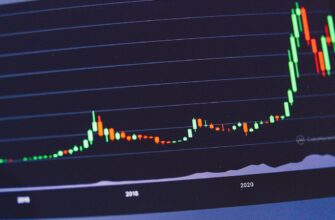## Introduction to Farming DOT on Rocket Pool
Rocket Pool, the leading decentralized Ethereum staking protocol, now enables users to farm Polkadot (DOT) tokens through its innovative liquid staking ecosystem. This guide breaks down exactly how to farm DOT on Rocket Pool step by step – from wallet setup to reward harvesting. Whether you’re a DeFi novice or seasoned farmer, you’ll learn to leverage Rocket Pool’s infrastructure for passive DOT earnings while contributing to Ethereum’s security.
## Prerequisites for DOT Farming
Before starting, ensure you have:
– A Web3 wallet (MetaMask or WalletConnect compatible)
– Ethereum Mainnet ETH for gas fees
– DOT tokens to stake
– Basic understanding of DeFi risks (impermanent loss, smart contract vulnerabilities)
## Step 1: Bridge DOT to Ethereum Network
Since Rocket Pool operates on Ethereum, you’ll need wrapped DOT (wDOT):
1. Use a cross-chain bridge like Multichain or Portal Bridge
2. Select Polkadot as source chain and Ethereum as destination
3. Enter desired DOT amount and initiate transfer
4. Confirm transaction (wait ~5-15 minutes)
## Step 2: Acquire Rocket Pool’s rETH
rETH (Rocket Pool’s liquid staking token) is essential for farming:
1. **Option A**: Stake ETH directly via [Rocket Pool dApp](https://stake.rocketpool.net/)
2. **Option B**: Buy rETH on DEXs like Uniswap or Balancer
3. Verify contract address: 0xae78736Cd615f374D3085123A210448E74Fc6393
## Step 3: Provide Liquidity to rETH/wDOT Pool
Create LP tokens for farming:
1. Go to a DEX supporting the pair (e.g., Curve Finance or Balancer)
2. Add equal value of rETH and wDOT to the liquidity pool
3. Approve both tokens and confirm LP creation
4. Save your LP token contract address
## Step 4: Stake LP Tokens on Rocket Pool
Maximize yields through Rocket Pool’s rewards system:
1. Navigate to Rocket Pool’s “Liquidity Mining” section
2. Connect your Web3 wallet
3. Select the rETH/wDOT LP pool
4. Approve and stake your LP tokens
5. Track rewards via the dashboard
## Optimizing Your DOT Farming Strategy
Boost returns with these pro tips:
– **Reinvest Rewards**: Compound yields weekly
– **Monitor APR**: Track rates on DeFiLlama or Rocket Pool’s analytics
– **Gas Timing**: Schedule transactions during low-fee periods (UTC 1-4 AM)
– **Diversify**: Allocate only 10-20% of portfolio to single farm
## Risks and Security Measures
Mitigate potential downsides:
– ✔️ Use verified contracts only (cross-check on Etherscan)
– ✔️ Enable wallet transaction confirmations
– ✔️ Monitor for pool concentration risks
– ❌ Never share seed phrases
– ❌ Avoid unaudited third-party platforms
## Withdrawing Your DOT Rewards
To exit the farm:
1. Unstake LP tokens from Rocket Pool
2. Remove liquidity from DEX pool
3. Unwrap wDOT to native DOT via bridge
4. Transfer DOT to your preferred wallet/exchange
## Frequently Asked Questions (FAQ)
### Can I farm DOT directly on Rocket Pool?
No – DOT farming occurs indirectly via wDOT/rETH liquidity pools on Ethereum DEXs, with staking amplified through Rocket Pool’s reward system.
### What’s the minimum DOT required?
No strict minimum, but consider gas costs (recommended: 50+ DOT to offset fees).
### How often are rewards distributed?
Rewards accrue continuously and can be claimed anytime, but compounding weekly optimizes gas efficiency.
### Is wrapped DOT (wDOT) safe?
Reputable bridges like Multichain use audited contracts, but bridging carries inherent smart contract risks.
### Can I lose my DOT tokens?
Possible risks include:
– Liquidity pool impermanent loss
– Smart contract exploits
– Bridge failures
Always use trusted protocols and never invest more than you can afford to lose.
## Conclusion
Farming DOT through Rocket Pool’s ecosystem offers a powerful avenue to earn passive income while participating in Ethereum’s proof-of-stake network. By following this step-by-step guide – bridging DOT, creating rETH/wDOT liquidity, and staking via Rocket Pool – you’ll tap into dual rewards from both protocols. Start small, prioritize security, and watch your DOT holdings grow through decentralized finance’s most trusted staking infrastructure.








